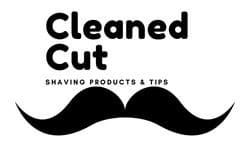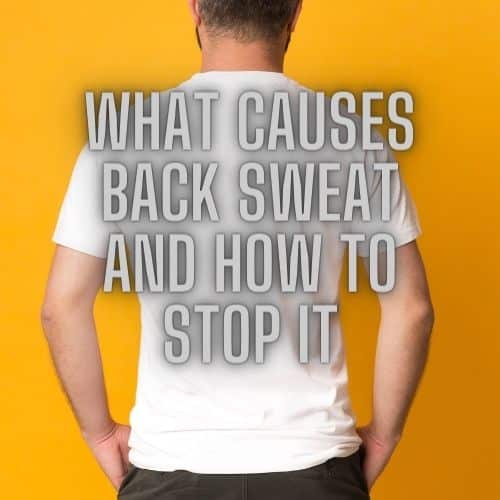Back sweat, also known as hyperhidrosis, is a condition characterized by excessive sweating on the back. While sweating is a natural process that helps regulate body temperature, excessive sweating can be uncomfortable and embarrassing. Back sweat can cause unpleasant odor, discomfort, and visible sweat stains on clothing.
Addressing back sweat is important not only for personal hygiene but also for confidence and social interactions. It’s common for people with back sweat to feel self-conscious and avoid certain activities or clothing styles.
What Causes Back Sweat
There are several factors that can cause back sweat. Some of these factors are physiological, while others are environmental or related to medical conditions.
- Physiological factors include overactive sweat glands, which can produce more sweat than necessary. Hormonal changes and genetics can also play a role in how much a person sweats.
- Environmental factors such as heat and humidity can trigger back sweat. Activities that involve physical exertion or prolonged periods of sitting can also lead to excessive sweating.
- Certain medical conditions such as hyperthyroidism, diabetes, and menopause can cause back sweat. In rare cases, back sweat may be a symptom of an underlying medical condition such as infections, tumors, or nerve damage.
How to Stop Back Sweat
Managing back sweat can involve a combination of personal hygiene, lifestyle modifications, and clinical treatments. Here are some ways to prevent or manage back sweat:
Personal hygiene and grooming
- Showering habits: Taking regular showers and using antibacterial soap can help reduce sweat and odor. It’s important to dry the back thoroughly after showering.
- Clothing choices: Wearing loose-fitting and breathable clothing made of natural fabrics like cotton can help reduce sweat. Avoiding tight-fitting clothing and synthetic materials like polyester can also help.
- Antiperspirant use: Applying antiperspirant to the back can help reduce sweat. Some antiperspirants are designed specifically for the back, while others can be used on any part of the body.
- Powder application: Using absorbent powders like talc or cornstarch can help reduce moisture and prevent chafing.
Lifestyle modifications
- Diet changes: Eating a balanced diet and avoiding spicy or hot foods can help reduce sweat. Drinking lots of water can also help keep you hydrated.
- Exercise habits: Staying physically active is important for overall health, but it’s important to choose activities that don’t trigger excessive sweating. Swimming, yoga, and walking are good options.
- Stress management: Stress can trigger sweating, so finding ways to manage stress such as meditation or deep breathing exercises can help reduce back sweat.
Clinical treatments
- Prescription antiperspirants: Prescription-strength antiperspirants may be recommended for severe cases of back sweat.
- Iontophoresis: This treatment involves applying a low-level electrical current to the skin to reduce sweat production.
- Botox injections: Botox injections can be used to block the nerve signals that trigger sweating.
- Surgery: In rare cases, surgery may be recommended to remove sweat glands in the back.
It’s important to consult a healthcare professional to determine the best treatment options for managing back sweat.
Recommended Products
There are various products on the market that can help alleviate back sweat. Here are some products worth considering:
Antiperspirants
- Certain Dri Prescription Strength Spray Antiperspirant: This antiperspirant is specifically designed for excessive sweating and can be used on the back.
- SweatBlock Clinical Strength Antiperspirant: These antiperspirant wipes can be used on any part of the body and are designed to provide long-lasting protection against sweat. Check out my in-depth review and product images in my post: Sweat Block Wipes Review.
Powders
- Gold Bond Medicated Body Powder: This powder contains menthol and zinc oxide, which can help absorb moisture and prevent chafing.
- Anti Monkey Butt Powder: This powder contains cornstarch and calamine, which can help absorb moisture and soothe irritated skin.
Clothing items
-
- Thompson Tee Sweatproof Undershirt: This undershirt is designed to prevent sweat marks and odor on clothing.
- Sweatproof T-Shirts: These t-shirts are made with sweat-wicking fabric and can be worn as an undershirt or on their own.
FAQ
Here are some common questions and answers about back sweat:
Is back sweat normal?
Yes, sweating is a natural process that helps regulate body temperature. However, excessive sweating can be a sign of an underlying medical condition or may cause discomfort and embarrassment.
Can back sweat cause skin problems?
Yes, back sweat can cause skin problems such as acne, rashes, and fungal infections. Keeping the back clean and dry can help prevent these issues.
Can diet affect back sweat?
Yes, certain foods such as spicy or hot foods can trigger sweating. Eating a balanced diet and staying hydrated can help reduce excessive sweating.
Are there any home remedies for managing back sweat?
Yes, some home remedies include applying apple cider vinegar or witch hazel to the back, taking sage supplements, or using baking soda as a natural deodorant.
When should I see a doctor for back sweat?
If back sweat is causing significant discomfort, interfering with daily activities, or is accompanied by other symptoms such as fever or weight loss, it’s important to see a doctor to rule out any underlying medical conditions.
Conclusion
Back sweat can be uncomfortable and embarrassing, but there are various ways to prevent or manage it. Personal hygiene, lifestyle modifications, and clinical treatments can all be effective in reducing back sweat. It’s important to consult a healthcare professional to determine the best treatment options. With the right approach, individuals can manage back sweat and feel confident and comfortable in their own skin.



